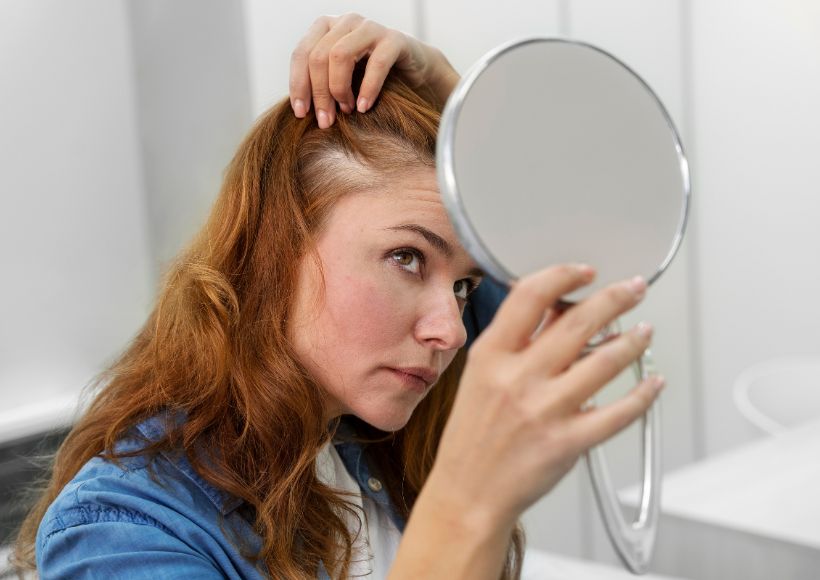From experience, we know that some people develop side effects from chemotherapy treatment, while others do not. The occurrence of these effects varies depending on the treatment, although they may differ between patients who have received exactly the same treatment.
Table of Contents
Most Common Side Effects
The most common side effects that patients undergoing chemotherapy treatment usually suffer are:
- Fatigue.
- Decreased level of blood cells.
- Nausea and vomiting.
- Diarrhea.
- Constipation.
- Alteration of the oral mucosa.
- Loss of appetite.
- Changes in the menstrual cycle in women.
- Changes in hair, skin and nails.
In this article we are going to focus on changes in hair and skin.
Hair changes caused by chemotherapy treatment
Hair loss is a common side effect of chemotherapy treatments . It is caused by the action of different medications that damage the hair follicle, causing hair loss.
When the treatment produces alopecia , hair loss is widespread, not only affecting the scalp, but also other parts of the body such as the armpits, arms, legs, eyebrows and pubis. Some treatments produce a fall of 100% and in others, the percentage of fall is lower.
The alopecia produced by the application of chemotherapy is always reversible , however the hair can grow with different characteristics from those it had before undergoing the treatment.
Before the fall
Before hair loss begins, it is always recommended to use a moisturizing shampoo for the scalp . At the same time, the use of hair dryers or irons should be avoided , better dry gently with a towel.
It is not recommended to use chemical products.
In many cases, hair loss is one of the main concerns for cancer patients, since personal appearance is important to feel good about oneself . If the patient is not comfortable with her image, it can create insecurity and tend to isolate themselves. In addition, hair loss makes the disease more apparent, both for the patient and for her environment.
A recommended option is the use of hair prostheses or wigs . If the patient decides on this alternative, it is advisable to choose the hair prosthesis or the wig before the hair loss begins , a few weeks before, making it easier to choose the color and style similar to the usual one, since in these cases it is What the patient usually wants is to keep his image and not make changes.
When it’s already fallen
Many patients feel depressed and angry about hair loss. In these cases it is helpful to talk with other people who have experienced hair loss during cancer treatment. It is also important to talk frankly with close family members to channel feelings.
When hair falls out, the scalp is exposed to the action of UV radiation. If you have not opted for the use of a wig or a hair prosthesis, you should protect your head when going outside, either by using a hat or scarf , or by applying sun protection. In winter it is essential to cover the head to avoid excessive loss of body heat. Here you can see our Pink Mama scarves, created exclusively for women undergoing cancer treatment.
Regardless of whether the patient opts for a scarf , a wig or a hair prosthesis , special attention must be paid to the scalp. We propose care in 3 phases:
during chemotherapy
Phase 1: cell renewal and detoxification, through the use of Iboderm cream , Dermopel shampoo and Equitox ampoules .
After finishing the chemotherapy sessions:
Phase 2: for 2 months, stimulation: Iboderm cream, Equiderm shampoo and R-Active 1% tonic .
Phase 3: for 3-4 months, nutrition: Iboderm cream, pH 5.5 Protein shampoo and Vasodil Minol ampoules .
when it grows back
After chemotherapy, hair always grows back. When it is born, it can do it with a different texture from the original (straight if it was curly before) or with more gray hair.
When a hair grows through skin cared for during the oncological process, it makes it stronger and healthier.
It is convenient to avoid the use of hair dyes for at least 3 months after finishing the treatment.
Skin changes caused by chemotherapy treatment
Chemotherapy can damage the fast-growing cells of the skin and nails, leading to dry, itchy, red, or peeling skin.
Some patients become sensitive to the sun, causing them to easily “burn” from sun exposure.
Control skin disorders
During the treatment, it is recommended to keep the skin always hydrated . For this, oat-based soaps , soft in their composition, are especially indicated.
If the patient has particularly dry skin, prolonged hot baths should be avoided as they further dry out the skin. Using moisturizing creams daily will be essential to maintain the good condition of the skin. Drinking plenty of water will also help keep your skin moist and healthy.
Also Read : 7 Tips For Healthy, Flawless Skin

